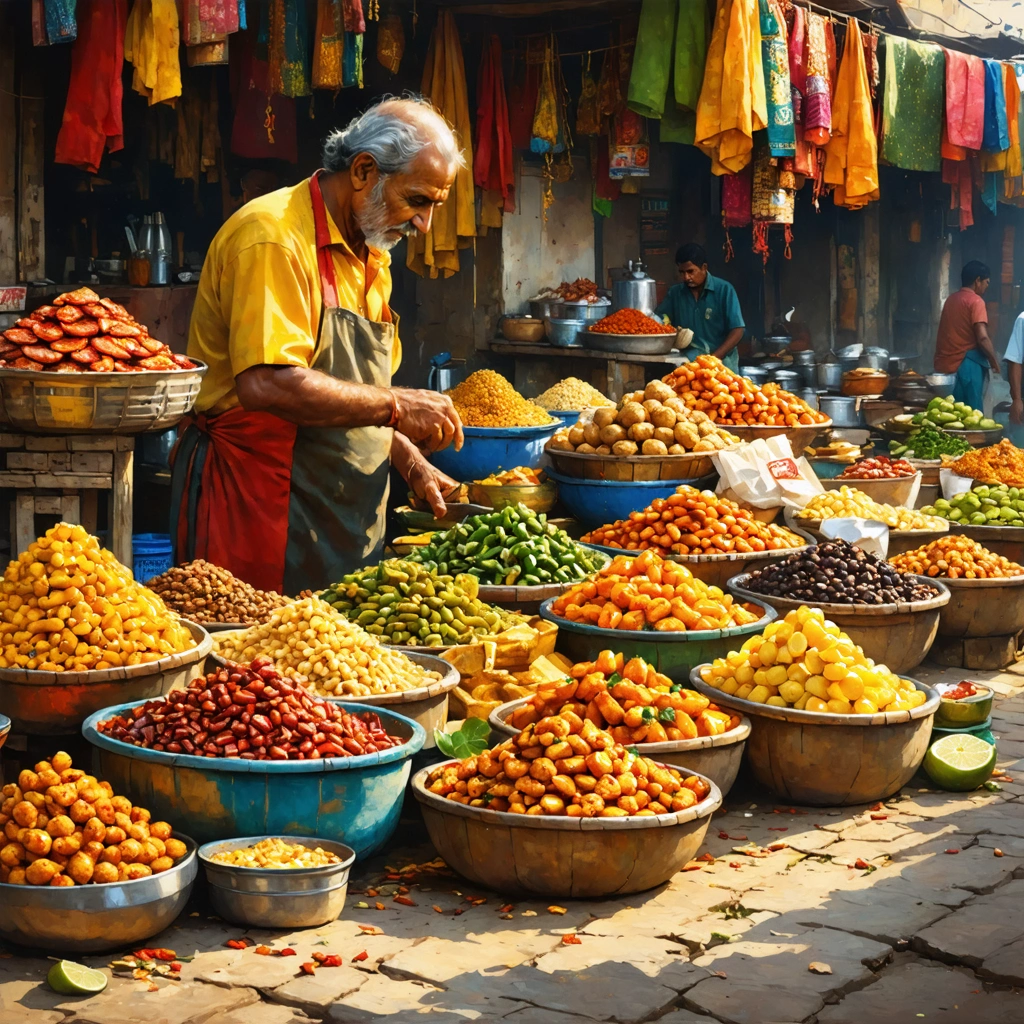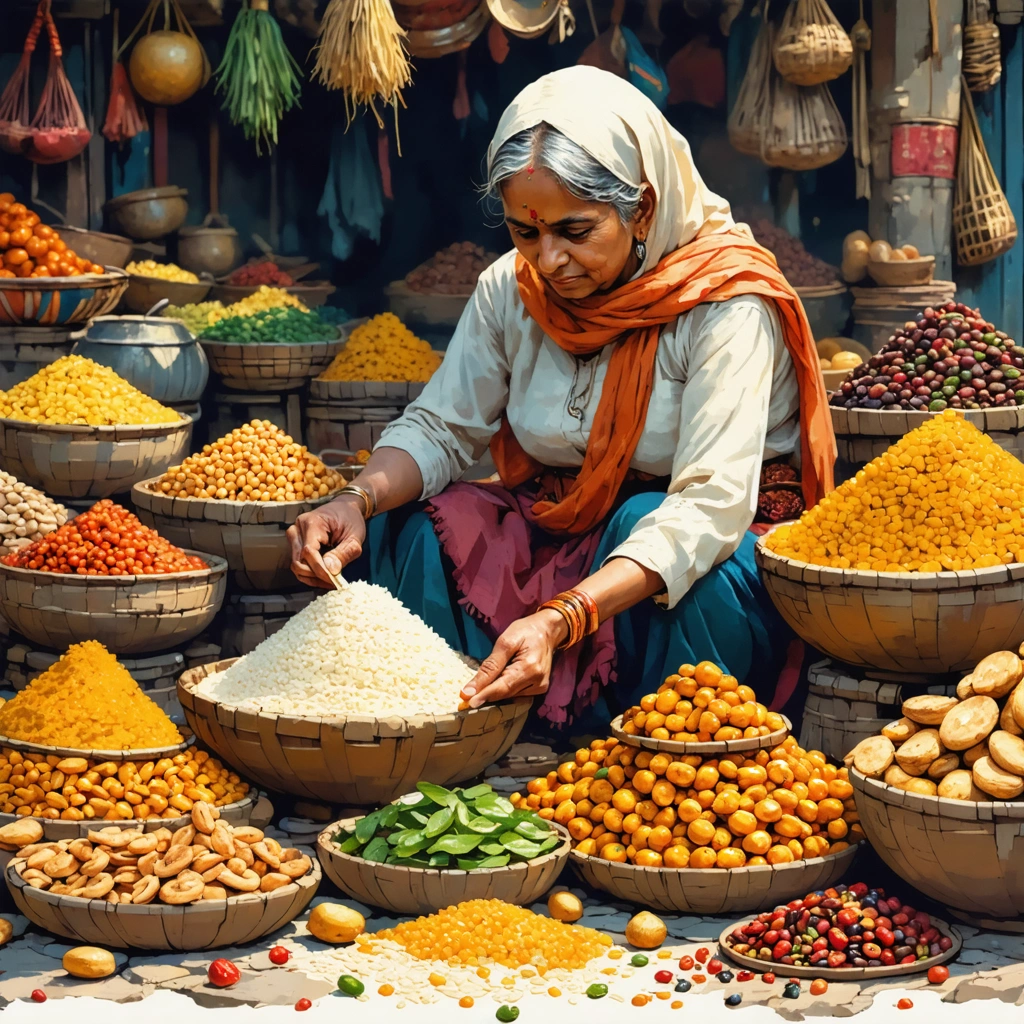
Imagine walking through a bustling Indian street market in 2025. The air is thick with the aroma of spices, freshly fried snacks, and sweet treats. Everywhere you turn, there’s a new bite waiting to surprise your palate—crispy, tangy, spicy, and utterly unforgettable. But with India’s vastness comes a bewildering variety of regional snacks, each carrying a story, a history, and a unique flavor profile. For many food lovers, the challenge lies not in discovering snacks, but in truly understanding the essence behind these culinary delights. What exactly makes a snack from Maharashtra different from one in Tamil Nadu? And why do some ingredients, like sabudana, take center stage in certain regions while remaining a mystery in others? This blog post is your passport to unraveling those savory secrets.
Why Regional Snacks Often Remain a Mystery
It’s easy to get overwhelmed by the sheer diversity of India’s snack culture. In fact, many people—even those who call themselves foodies—find themselves stuck at the basics, often limiting their snack repertoire to popular staples like samosas or pakoras. But consider this: have you ever wondered what Ararot Kya Hota Hai and its culinary significance are? Or why Sabudana Ki Khichdi, a humble yet beloved snack, holds a revered spot in Maharashtra’s fasting rituals and festive tables? The curiosity doesn’t end there. The realm of Mithaiyon Ke Naam—the myriad traditional sweets—often overshadows the equally rich world of savory indulgences that vary drastically from one state to another.
For many, the problem is not just a lack of awareness but an overwhelming abundance of options that can feel like navigating a labyrinth without a guide. This confusion sometimes leads to missed opportunities to appreciate the cultural and culinary heritage embedded in every bite. Such snacks are not mere food items; they are edible stories passed down through generations, shaped by geography, climate, and local traditions.
Peeling Back the Layers: A Journey Through India’s Regional Snacks
Let’s take a moment to rethink how we approach Indian snacks. Instead of viewing them as just quick bites, what if we saw them as windows into India’s cultural mosaic? This blog will serve as your curated guide, spotlighting iconic regional snacks that define India’s culinary identity in 2025, while also answering those burning questions like Ararot Kya Hota Hai—a lesser-known ingredient that plays a surprising role in certain local dishes.
We’ll dive into some celebrated favorites like Sabudana Ki Khichdi, exploring its significance beyond just being a fasting food. You’ll discover how this tapioca-based dish varies in preparation and presentation across different regions. Alongside, we will shed light on intriguing snacks that might not yet have made it to your “must-try” list but are poised to become the new crowd favorites in the coming years.
By the end of this journey, you’ll not only have a better grasp of the snackscape but also gain insights into the cultural narratives behind each bite. Whether you’re a traveler, a culinary enthusiast, or someone who simply loves munching on flavorful tidbits, this blog will enrich your appreciation for the snacks that truly define India’s regional cuisines in 2025.

Regional Snacks of India: Savor the Savory Snacks Defining India’s Regional Cuisines in 2025
What Are the Most Popular Regional Snacks of India in 2025?
India’s culinary landscape is incredibly diverse, with each region offering unique savory snacks that reflect local ingredients, traditions, and cultural influences. In 2025, the popularity of regional snacks continues to grow, both within India and globally, as food enthusiasts seek authentic and flavorful experiences.
Some of the most beloved regional savory snacks include:
- Bengal’s Shingara: A deep-fried pastry filled with spicy potatoes or minced meat, similar to samosas but with a distinct flavor profile.
- Gujarati Fafda: A crunchy chickpea flour snack often paired with spicy chutney and fried green chilies.
- South India’s Murukku: A crispy, spiral-shaped snack made from rice and urad dal flour, popular during festivals.
- Punjabi Amritsari Kulcha: Stuffed bread served with chickpea curry, often enjoyed as a hearty snack or light meal.
- Maharashtrian Sabudana Ki Khichdi: A light and nourishing dish made from soaked tapioca pearls, peanuts, and mild spices, traditionally eaten during fasting but also cherished as a snack.
Understanding these snacks helps appreciate how regional tastes and ingredients shape India’s culinary identity.
What Is Sabudana Ki Khichdi and Why Is It So Popular?
Sabudana Ki Khichdi is a traditional Maharashtrian dish made primarily from sabudana (tapioca pearls). It is especially popular during fasting days (vrat) because it is light, easily digestible, and provides quick energy. The pearls are soaked until soft and then cooked with roasted peanuts, cumin seeds, green chilies, and sometimes potatoes, creating a mildly spiced, nutritious snack or meal.
This dish's popularity extends beyond fasting due to its gluten-free nature and balanced nutrition, appealing to health-conscious consumers in 2025. Food bloggers and chefs are experimenting with fusion versions, adding vegetables or spices to enhance its flavor while retaining its traditional roots.
Sabudana Ki Khichdi exemplifies how a simple ingredient like tapioca can be transformed into a beloved regional specialty that resonates with both tradition and modern dietary preferences.
What Is Ararot Kya Hota Hai and How Is It Used in Indian Cuisine?
Ararot, also known as arrowroot, is a starch obtained from the rhizomes of tropical plants. In India, it is commonly used as a thickening agent in recipes and is prized for its digestibility and cooling properties.
In regional cuisines, ararot is often used in:
- Fasting recipes, where it replaces regular flour or grains to maintain dietary restrictions.
- Preparation of light snacks and desserts due to its neutral taste and smooth texture.
- Medicinal home remedies for digestive issues, reflecting its traditional role in Ayurveda.
Ararot's versatility and health benefits make it a staple ingredient, especially in states like Kerala and Tamil Nadu, where it enhances both savory and sweet preparations.
What Are Some Popular Mithaiyon Ke Naam (Names of Indian Sweets) That Complement Regional Snacks?
While savory snacks dominate regional Indian cuisine, traditional sweets, or mithaiyon ke naam, offer a perfect balance and are integral to festivals and celebrations. Some iconic mithai include:
- Rasgulla: Soft, spongy balls made from chenna (curdled milk) soaked in sugar syrup, popular in Bengal and Odisha.
- Gulab Jamun: Deep-fried dough balls drenched in rose-flavored syrup, enjoyed across India.
- Kaju Katli: Diamond-shaped cashew nut fudge, a delicacy during Diwali.
- Ladoo: Various types, such as besan ladoo (gram flour) or motichoor ladoo (tiny fried balls), each with regional variations.
- Sandesh: A Bengali sweet made from fresh paneer, often flavored with saffron or cardamom.
These sweets often accompany savory regional snacks in meals or festivals, creating a harmonious culinary experience that highlights the diversity and richness of Indian cuisine.
Why Are Regional Snacks Important in Understanding India’s Culinary Diversity in 2025?
Regional snacks serve as edible narratives of India’s cultural and historical evolution. Each snack tells a story about local agriculture, climate, trade routes, and socio-religious customs. In 2025, as globalization influences food trends, there is a renewed interest in preserving and celebrating these traditional snacks.
According to recent market reports, the Indian savory snack segment is projected to grow at a CAGR of over 10% through 2027, driven by urbanization and increasing consumer demand for authentic regional flavors. This growth indicates not only economic opportunities but also a cultural resurgence in appreciating local foods.
By exploring snacks like Sabudana Ki Khichdi and understanding ingredients such as ararot, food enthusiasts and industry professionals gain insights into how regional cuisines adapt and thrive in the modern era.
How Can One Explore and Experience India’s Regional Snacks Authentically?
To truly savor India’s regional snacks, consider the following approaches:
- Travel: Visiting different states and tasting snacks from local vendors provides authentic flavors and cultural context.
- Cooking at Home: Trying recipes like Sabudana Ki Khichdi with traditional methods helps understand ingredient roles and preparation techniques.
- Food Festivals: Events like the India Food Festival showcase regional specialties, allowing taste-testing and culinary education.
- Engage with Local Artisans: Learning from home cooks or street vendors preserves traditional knowledge and supports local economies.
Such immersive experiences deepen appreciation for India’s vast culinary heritage and ensure these snacks remain relevant and celebrated in 2025 and beyond.
